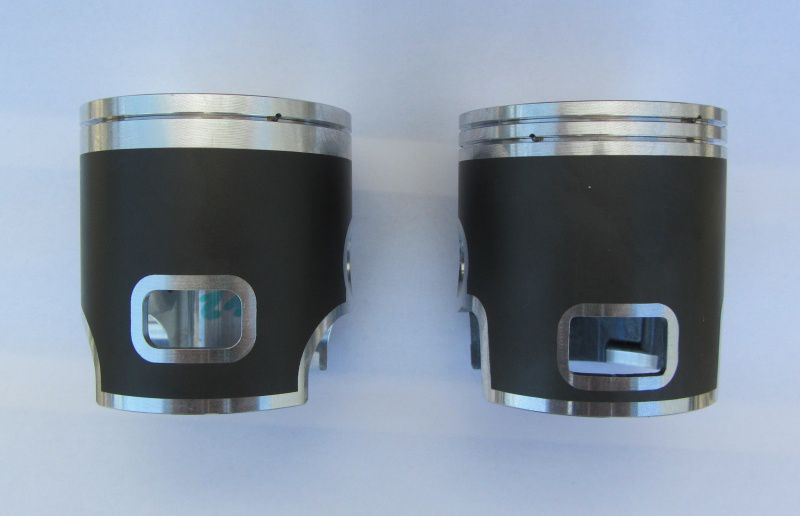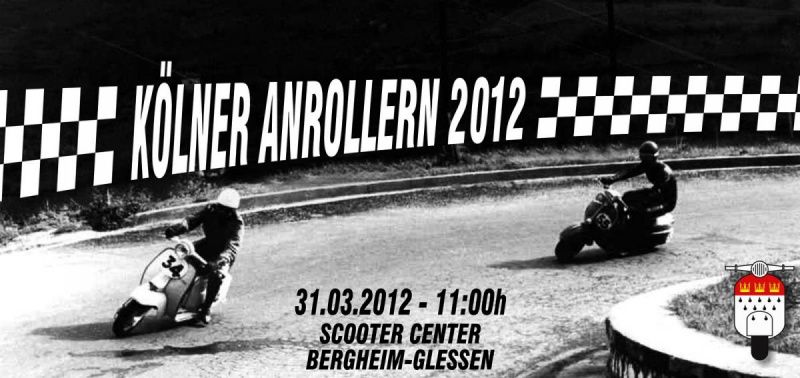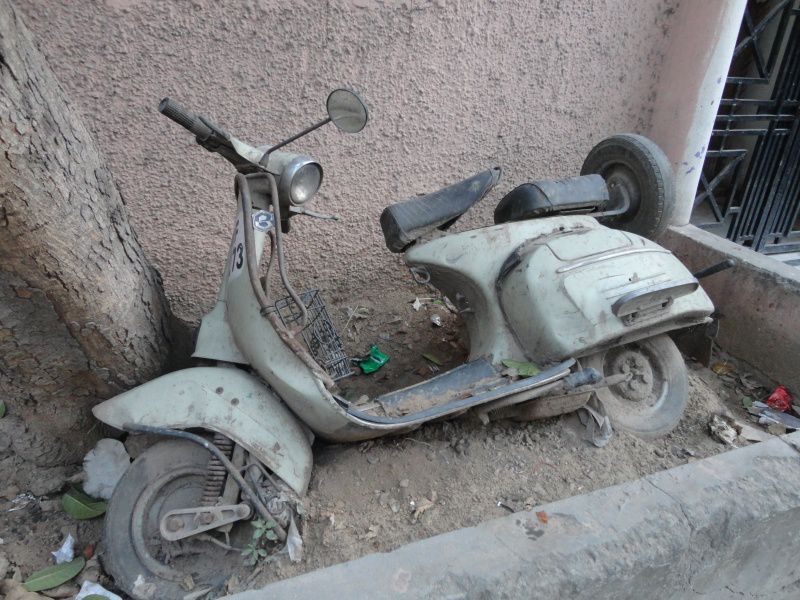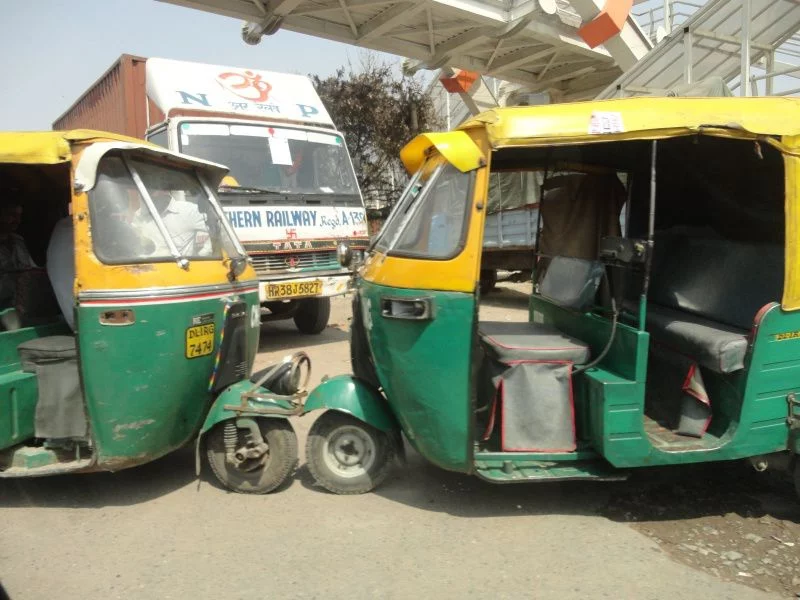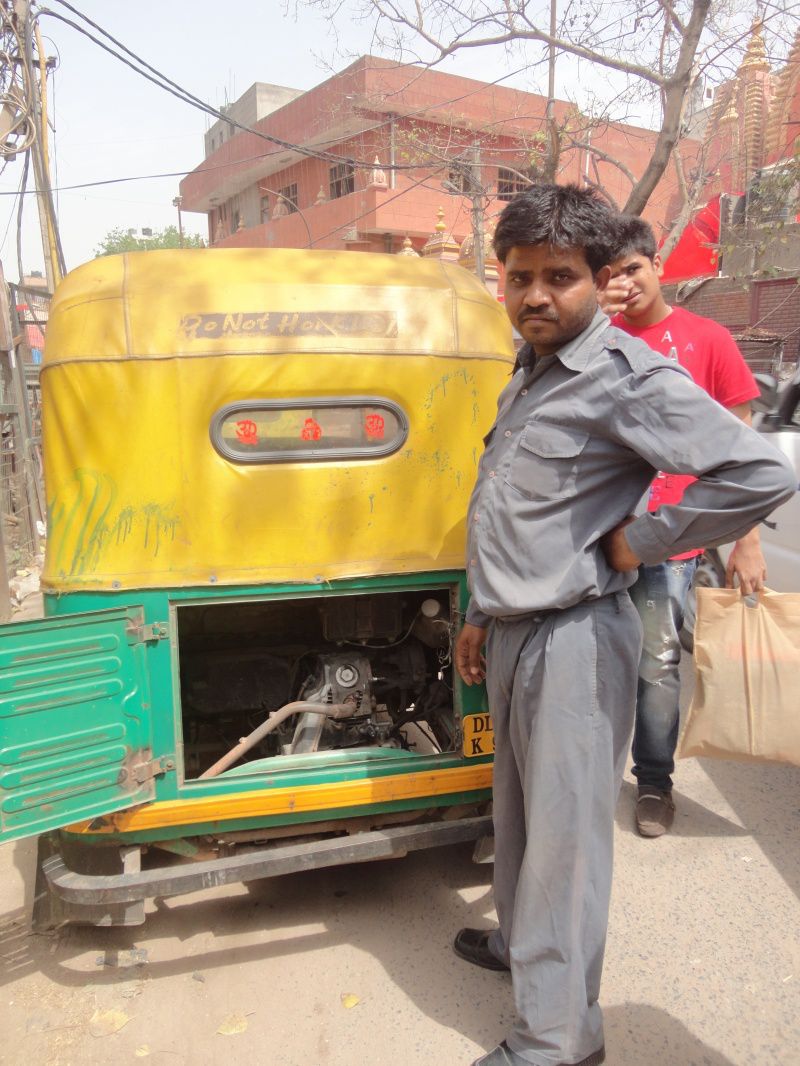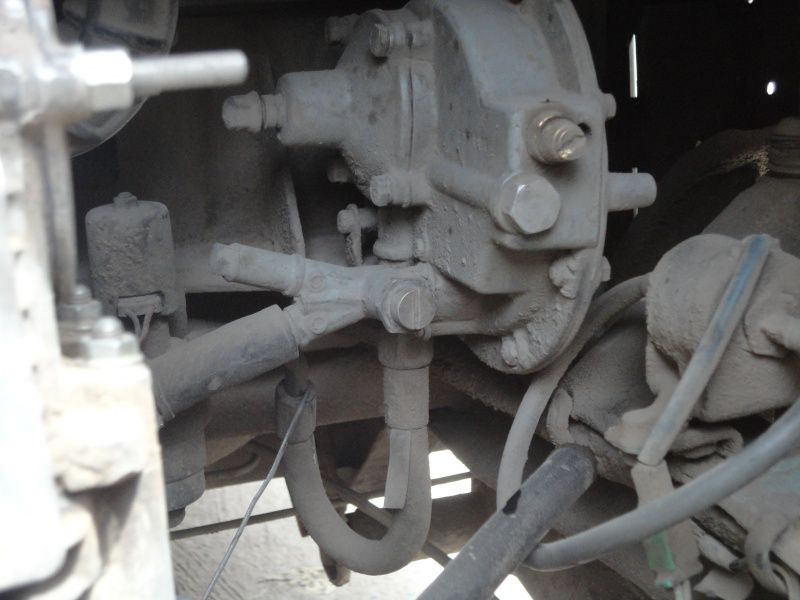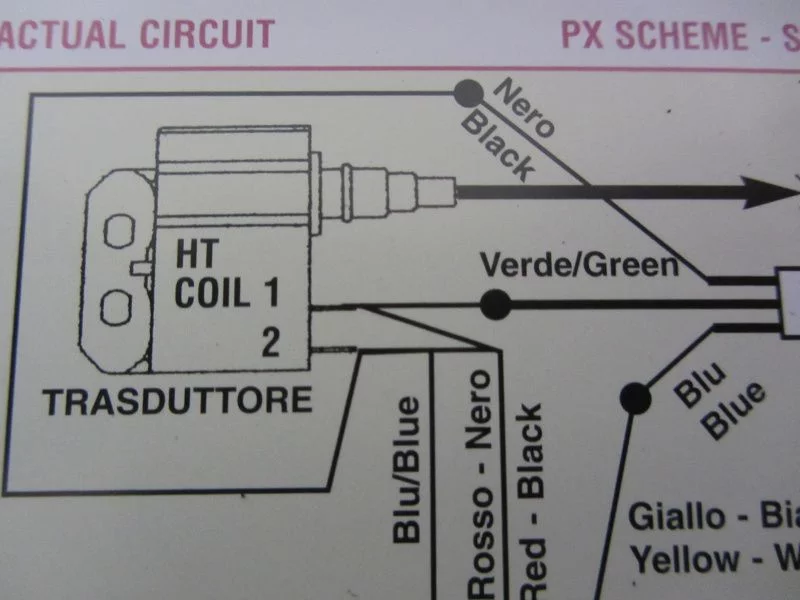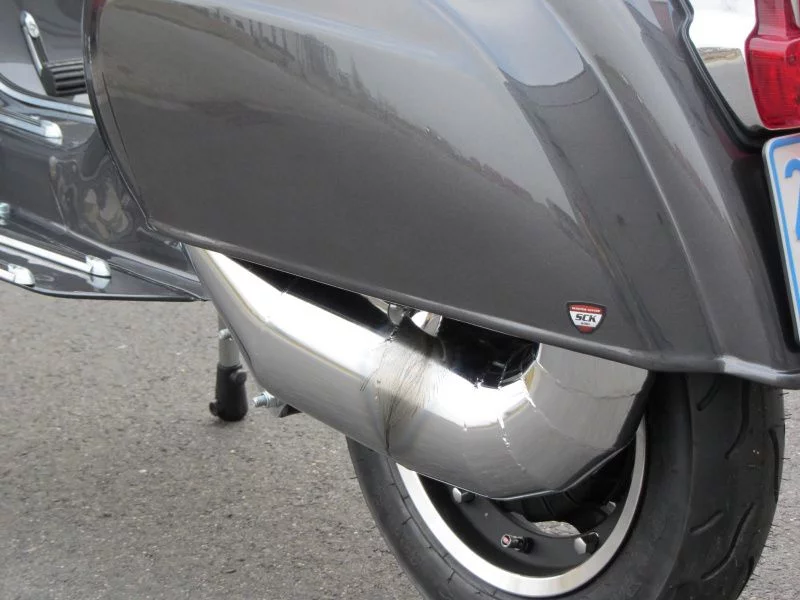Today the Cologne roll-up started 2012 from ours Scooter Center Shop in Bergheim Glessen.
Despite the cloudy weather and only 8 ° degrees, some Vespisti came together to go out together. In advance there were hot drinks and reinforcements for all scooter drivers.
Let's hope that the season will be successful and that we will see many more trips together. The SCK team wishes you a good trip at all times.
Yesterday we received the new GP ONE cnc milled engine casings for all Vespa Smallframes.
We already used it for our 20 year anniversary shop demonstrator. See a video of the first test run here.
The casings are made for direct intake cylinders like that Parma kit 130cc.
There will be 2 designs available. One with 57mm standard bore for 51mm and 54mm crankshafts and one for the Falc 153cc cylinder with 60mm bore and 54mm crankshafts.
The selling price will be 1799 € including VAT.
More information and details will follow next week.
Here are our winners from the custom show in Cologne:
Best racer
1st: Jens B., No. 187, Yamaha Neos
2nd: Luca Z., No. 219, Yamaha Aerox
3rd: Michael S., No. 352, Yamaha Aerox
Best sprinter
1st: Damien D., No. 229, Dio Af18
2nd: Patrick B., No. 195, self-made sprinter
3rd: Sascha R., No. 293, Carbon Sprinter
Best streetsleeper
1st: Tobias E., No. 314, Gilera Runner
2nd: Julian H., No. 296, Speedfight 100
3rd: Artjom K., No. 304, Yamaha Spy
Best display
1st: Friedhelm V., No. 240, Yamaha Stunt
2nd: André H., No. 212, Gilera Runner
3rd: Daniel H., No. 196, Yamaha Aerox
best ideas
1st: Krzysztof K., No. 313, Aprilla Gulliver
2nd: Timo S., No. 286, Aprilla SR50
3rd: Alexander R., No. 350, self-made
Best light & sound
1st: Sebastian S., No. 297, Speedfight / Aerox
2nd: Ralf B., No. 288, MBK Nitro
3rd: Dennis S., No. 299, MBK Booster
Best odds
1st: Thomas S., No. 228, Selfmade
2nd: Alexander R., No. 276, Yamaha Aerox
3rd: Jacob V., No. 209, Honda Wallaroo
Best bodywork
1st: Michael H., No. 270, Aprilla SR50
2nd: Dennis M., No. 223, Peugeot Speedfight1
3rd: Daniel H., No. 256, Yamaha Stunt
Best paint
1st: Klaus M., No. 206, Yamaha Aerox
2nd: Ivan K., No. 192, Aprilla SR50
3rd: Nicolas T., No. 282, Peugeot Ludix
Best plating
1st: Sebastian R., No. 251, Yamaha Aerox
2nd: Pascal W. & Fabian P., No. 268, Peugeot Jetforce
3rd: Marcel H., No. 197, Malaguti F12
Best overall
- Marc D., No. 189, Aprilla SR50R
Best engineering
- Rene R., No. 215, Peugeot Speedfight2
Our journey took us to the scooter world of India this time. There are still many Vespa PX styles scooters on the road which had been produced by LML. In the past many scooters Similar to the European Vespa and Lambretta models were manufactured by Bajaj and Priya. This is because Piaggio sold assembly belts and licenses to India. Scooters over there are used as an everyday vehicle, and due to the poor road conditions they need to fulfill different standards than they do in Europe. However, you can clearly see that even in India the classic metal style scooter is slowly disappearing from the big cities. They are replaced by modern Bajaj 125 – 150cc motorcycles and scooters. Many scooters are simply left in a corner and are no longer used. Here is an example of a Bajaj which has been placed in a front yard and is not used any more:
The typical Indian cityscape is coined by the auto rickshaws which look like the Piaggio Ape models.
A big surprise was to see that a modification was made because metro cities like Delhi, Mumbai or Calcutta now require that all public transport must be converted to gas power. This significantly reduced the smog caused by exhaust fumes in recent years, and even 2-stroke engines now have only a small footprint.
This picture shows the CNG connection to the carburetor of the rickshaw engine. A really incredible invention for an emerging country like India.
More blog post to come about India.
The assembly of the Vespatronic needs a lot of TLC and improved interpretation.
A further complication is the fact that the attached wiring diagram is not correct.
According to the wiring diagram, the mass and excitation voltage would be simply put together and distributed again to ports 1 and 2 of the CDI.
It is of course only right to wire red / black from the stator plate to -1 - (the wider slot) which is connected with green on the wiring loom and blue to -2 - to connect (the narrow slot), which is connected with black on the wiring loom.
 Likelihood of confusion exists with the cable box; here different colors need to be combined. All cables with dissolved connectors and which are energized during running engine have been provided with plug-in sleeves. The earth connection is not as potentially dangerous and can be equipped with a plug.
Likelihood of confusion exists with the cable box; here different colors need to be combined. All cables with dissolved connectors and which are energized during running engine have been provided with plug-in sleeves. The earth connection is not as potentially dangerous and can be equipped with a plug.
In order not to confuse the exciting voltage and the on-board vehicle electrical system which are both connected with a plug-in sleeve, you can use the following memory hook: “blue sea under the yellow sun” - in practice this works really well ...
For test purposes we will adjust the stator plate to the later mark of the 2 marks available.
 Once we have placed all the glory in the cable box and the flywheel is mounted again, we can start the engine to control the ignition timing.
Once we have placed all the glory in the cable box and the flywheel is mounted again, we can start the engine to control the ignition timing.
The marks for the TDC of 25 ° have been previously determined and marked by reversal measurement.
A quick check with the strobe light ...
 The ignition is set to 25 ° at 2000 rpm. This is a satisfactory starting point for a run on the test rig.
The ignition is set to 25 ° at 2000 rpm. This is a satisfactory starting point for a run on the test rig.
The goal was a 25 hp engine but have a look at the diagram itself.
 Without air filter was the 148 main jet was still OK but with filter we had to use a 145 main jet and in addition to that we had to move the NAPE needle a clip on the 2nd position from the top.
Without air filter was the 148 main jet was still OK but with filter we had to use a 145 main jet and in addition to that we had to move the NAPE needle a clip on the 2nd position from the top.
19hp and 25Nm at 6.000rpm speaks for itself. Even at 8.600rpm there are 25hp and 20Nm on the rear wheel. In this power range there will be no power loss when changing gears. It is incredibly awesome ...
To get an idea of how fast this baby can get in the end, we will make another test run - HP vs. Km / h
 At a speed of 140 km / h there are still 24hp left ...
At a speed of 140 km / h there are still 24hp left ...
What do you think? Mission accomplished?
Only thing left now is to place the remaining parts again and then we are ready for a practical test on the road ...
Last week our friend Harald from Aachen came to play around on our dyno. He was not 100% happy with the carb setting and wanted to test the slow running and improve throttle response.
These are the parts that are fitted to his engine:
Cylinders: Monza 70mm bore
Crankshaft:BGM 60 / 110mm
carbs Mikuni TMX 30
Exhaust: JL-KRP3
Port timings: 186 ° / 126 °
Squish: 1,7mm
Easy to spot that there was room to improve the jetting. The blue curve shows the difference.
Thanks to a different slide (richer) and to an altered needle position power and torque low down have been increased further. And the over rev potential is much better too.
Our good customer Sven came on Saturday to show his new Vespa Spezial.
A real stunner. And the colors work together pretty well, especially with the nice bgm PRO SC shockers!
At the dyno we checked the engine and its power output! There is no porting work done to the barrel. It went to the casings completeley Plug & Play!
The port timings are transfers 128 ° and exhaust 190 °. This gives a blow down timing of 31 °. With slightly more blow down timing the exhaust Big Bertha would work even better. Maybe we will see Sven reworking the port timings in the future !?
These are the selected engine parts:
Cylinder kit: Parmakit SP09
Crankshaft: BGM 51/105
carbsKeihin PWK 33
Intake system: Polish reeds With Straw speed manifold
ignition: Vespatronic
Exhaust: Big bertha
Friday Dennis one of the guys from our Raceteam came to test his high speed circuit racing engine.
The engine is finished with these parts and the results on our P4 dyno were very impressive.
Cylinders: Parmakit 144cc, 60mm bore
Crankshaft: BGM 51/105
carbs Keihin PWM 38
Exhaust:Big bertha
This was the first dyno run and the jetting was: idle jet 52, main jet 160, needle DEG. For a first dyno run with probably some room for improvements smiles were all over. With 2.46 primary drive by DRT this should be a nice ride on fast tracks like the Nürburgring or Bilster Berg race track.
Despite Rose Monday, our shop in Bergheim-Glessen is open from 10:00 a.m. to 18:30 p.m.

